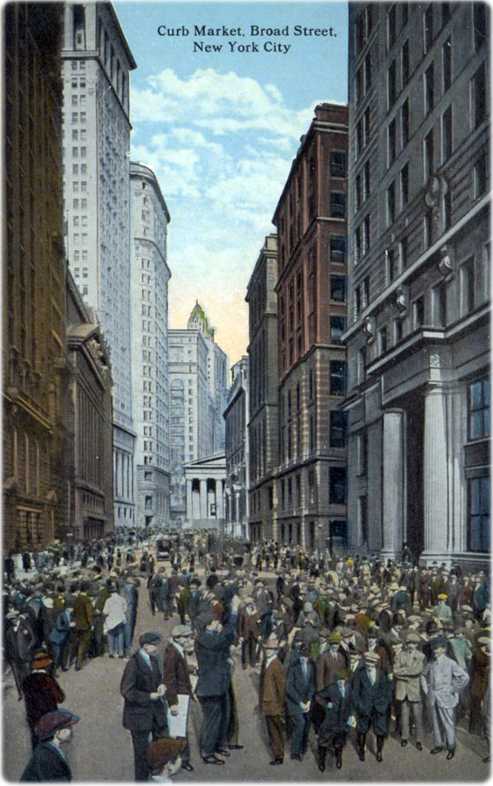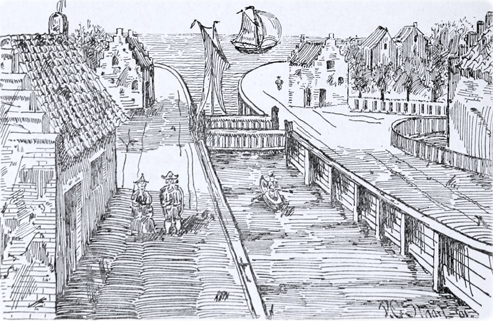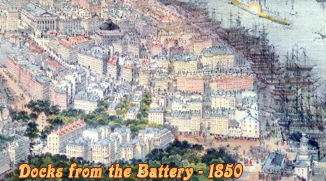
Broad Street
Broad Street connects Wall Street, north to south, with South Street on the riverfront. It is one of the oldest streets in New York, built in the 17th century by the Dutch. This historic street was the site of early mercantile houses and the first exchange. It remains one of the busiest streets in the City. The present name dates from 1692.
In the early 1640s, the section of the street, south of what is now Beaver Street, was "the common ditch". The northern section was a marshland and sheep pasture. Lots on both sides of the street began to be granted in 1642 by the Dutch West India Company.
About 1646, the existent inlet began to be enlarged into a canal, the "Heere Gracht", and streets were extended on both sides. The canal was completed in 1659. Canals is a common urban feature in Amsterdam, brought by the Dutch settlers to New Amsterdam, in America. The canal was filled between 1676 and 1671, during the English rule.
Early notable establishments on Broad Street included the Lovelace Tavern, Fraunces Tavern and the Royal Exchange. In 1691, the first Broad Street market was established at the south end of the Street, housed in a building that stood until 1746. The City’s first firehouse was built in 1736, in front of present NYSE.
About 1833, Broad Street was lit by gas. In the Great Fire of 1845, 177 buildings on Broad Streets were destroyed. The first NYSE building was completed in 1865. The asphalt pavement was laid down as of 1890. In the 1890s the “Curb Market” gathered daily at Exchange Place. Unlisted, riskier and less profitable securities were traded on this outdoor market until 1921.
The neoclassic façade of the New York Stock Exchange, completed in 1903, and its main entrance is located on 18 Broad Street. In 20th century, Broad Street became a canyon of skyscrapers. After 9/11, 2001, most of Broad Street and Wall Street was closed to motor vehicle traffic.


|
Copyright © Geographic Guide - Old NYC. Historic Streets. |
Curb Market on Broad Street, looking north toward the Treasury on Wall Street. A unique open market on which are sold stocks that are not listed on the exchanges. Vintage postcard, postmark 1913, by H. Finkelstein & Son, the American Art Publishing Company.
The old canal (Heere Gracht) in what is now Broad Street, in 1650. Illustration published in Principles of City Land Values by Richard M. Hurd (1903).

Canyon of skyscrapers on Broad Street, Lower Manhattan. Vintage postcard by Manhattan Post Card Publishing Co., postmark 1957.

Showing the full length of Broad Street and the architecture of Fraunces Tavern before the fire of 1852.
New Amsterdam in 1661 (the Duke's Plan), with additional present-day street names, showing Broad Street and its part with the canal (Heere Gracht) flowing into East River.
Broad Street
